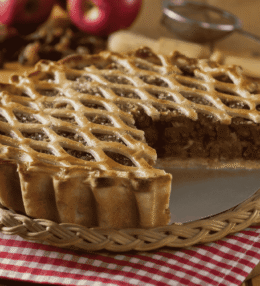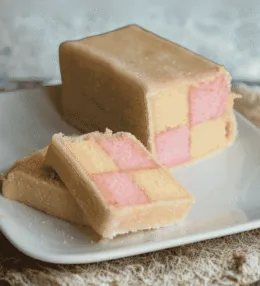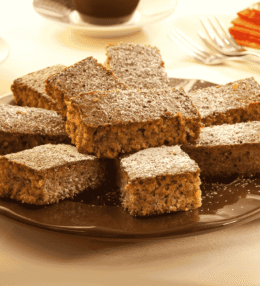
- View
Table of Contents
ToggleGözleme is a traditional Turkish flatbread, crispy on the outside and filled with a variety of savoury ingredients, it’s an iconic dish that satisfies at any time of day.
The process of preparing Gözleme, from kneading the dough to watching it cook on a griddle, offers a sensory experience filled with aroma and warmth, a slice of Turkish culture in every bite.
Want to dive deeper into Turkish Cuisine? Don’t miss our post on 44 Traditional Turkish Foods to Try
What Is Gözleme?
Gözleme is a stuffed flatbread made from thinly rolled dough, filled with an array of ingredients, folded into a square or rectangle, and cooked on a hot griddle or sac (a traditional Turkish convex griddle).
The dish is incredibly versatile, with fillings that range from spinach, potatoes, and cheese to ground meat and seasonal herbs. Once filled and folded, the Gözleme is cooked until golden brown, with occasional pockets of char that add to its character and flavour.
Although it’s popular as street food, Gözleme is also a cherished homemade dish in Turkey. It’s commonly enjoyed for breakfast, lunch, or as a quick snack. Turkish families often gather around to make it together, each person taking part in rolling, filling, or cooking.
The name “Gözleme” comes from the Turkish word “göz,” meaning “eye,” likely referring to the little bubbles that form on the surface of the dough as it cooks.
Ingredients and Taste
The core ingredients of Gözleme are simple yet essential. Flour, water, salt, and a bit of oil make up the dough, which is rolled out paper thin to achieve the right texture, crispy on the outside but tender enough to complement the filling. The fillings vary widely, allowing each version of Gözleme to offer a unique taste experience.
Spinach and feta create a vibrant, tangy filling, while ground lamb or beef with spices adds a savoury depth that’s warm and satisfying. Potatoes mashed with herbs bring an earthy, comforting flavour, and some versions add onions or tomatoes for added sweetness and juiciness.
Cooking Gözleme on a hot griddle enhances the flavours, creating a crispy, slightly charred exterior that contrasts beautifully with the soft, warm filling. The fillings blend with the thin layers of dough, creating a perfect balance of textures and flavours.
Each bite of Gözleme is a satisfying combination of smoky, savoury, and sometimes tangy flavours, making it both hearty and enjoyable to eat.
A Taste of History
Gözleme has deep roots in Turkish cuisine, particularly in rural regions where it was traditionally made by hand for family gatherings and special occasions.
The dish likely originated as a way to use simple ingredients in a filling and portable meal, perfect for farmers and shepherds who needed sustenance throughout their day. Over time, it became a beloved staple, found in Turkish homes, street markets, and bakeries.
The art of making Gözleme has been passed down through generations, with each family adding their own regional touches or favourite fillings.
Historically, the fillings varied according to what was locally available and in season, which is why Gözleme can range from rich, meaty versions to lighter, vegetable filled ones. This adaptability has helped Gözleme endure and thrive, remaining a treasured dish that reflects Turkey’s culinary diversity.

Turkish Gözleme (Stuffed Flatbread)
Equipment
- Mixing bowl
- Rolling Pin
- Large skillet or griddle
- Spatula
Ingredients
For the Dough:
- 2 cups all-purpose flour plus extra for dusting
- 1/2 tsp salt
- 3/4 cup water lukewarm
- 1 tbsp olive oil
For the Filling:
- 200 g spinach washed and chopped
- 100 g feta cheese crumbled
- 1 small onion finely chopped
- 1/2 tsp chili flakes optional
- Salt and black pepper to taste
- Olive oil for cooking
Instructions
- To begin, take a large bowl and add the flour and salt. Gradually pour in the lukewarm water and olive oil, mixing with your hand or a wooden spoon until a rough dough forms. Knead for 5-6 minutes until smooth and elastic. Cover the dough with a damp cloth and let it rest for 30 minutes to relax the gluten, which will make it easier to roll out.
- While the dough rests, prepare the filling. In a separate bowl, combine the chopped spinach, crumbled feta, and finely chopped onion. Sprinkle with chili flakes, salt, and black pepper to taste. Mix thoroughly. The salt in the cheese may be enough, so adjust the seasoning accordingly.
- Once the dough has rested, divide it into four equal portions. Dust a clean surface lightly with flour, and take one portion of dough. Roll it out into a thin, round sheet, approximately 10-12 inches in diameter. For the best results, roll the dough as thin as possible without tearing it.
- Place a portion of the filling on one half of the rolled out dough, leaving a small border around the edges. Fold the dough over the filling to create a semi-circle, and press down gently along the edges to seal.
- Repeat this process with the remaining portions of dough and filling, keeping the completed gözleme pieces covered with a cloth to prevent drying while you work on the others.
- Heat a large skillet or griddle over medium heat and add a small amount of olive oil to coat the surface. Once hot, place one gözleme in the pan. Cook for 2-3 minutes on each side, pressing down gently with a spatula to ensure even cooking. The bread should develop golden brown spots, and the filling should warm through.
- Continue cooking the remaining gözleme pieces, adding a little more oil to the skillet as needed between each one. If the bread is browning too quickly, lower the heat slightly to allow the filling to cook without burning the outside.
- To serve, cut each gözleme into slices and enjoy warm. This dish pairs beautifully with a side of plain yogurt or a drizzle of lemon juice for added freshness. Serve immediately for the best texture, savouring the balance of the crisp exterior and savoury filling within.






